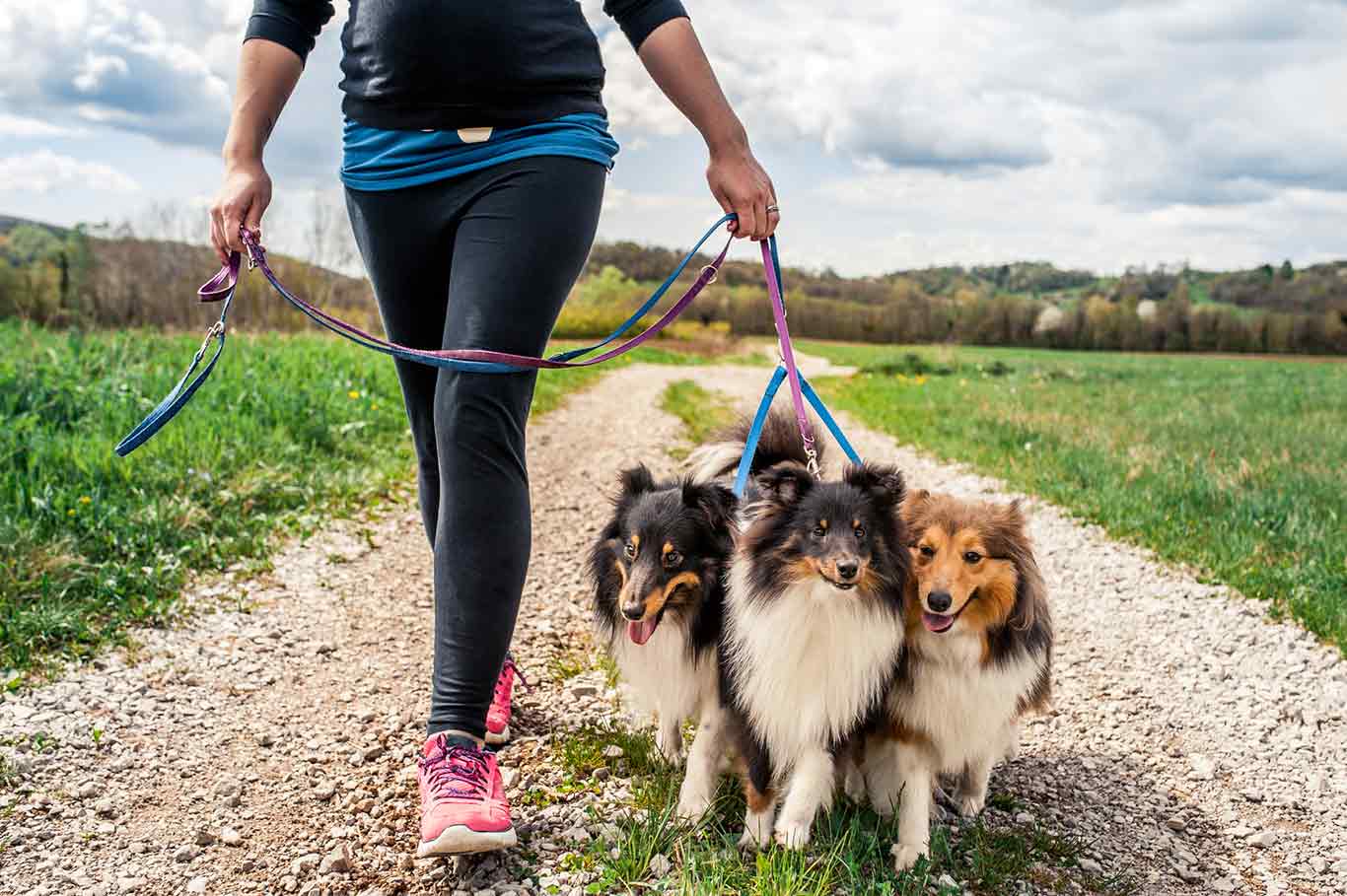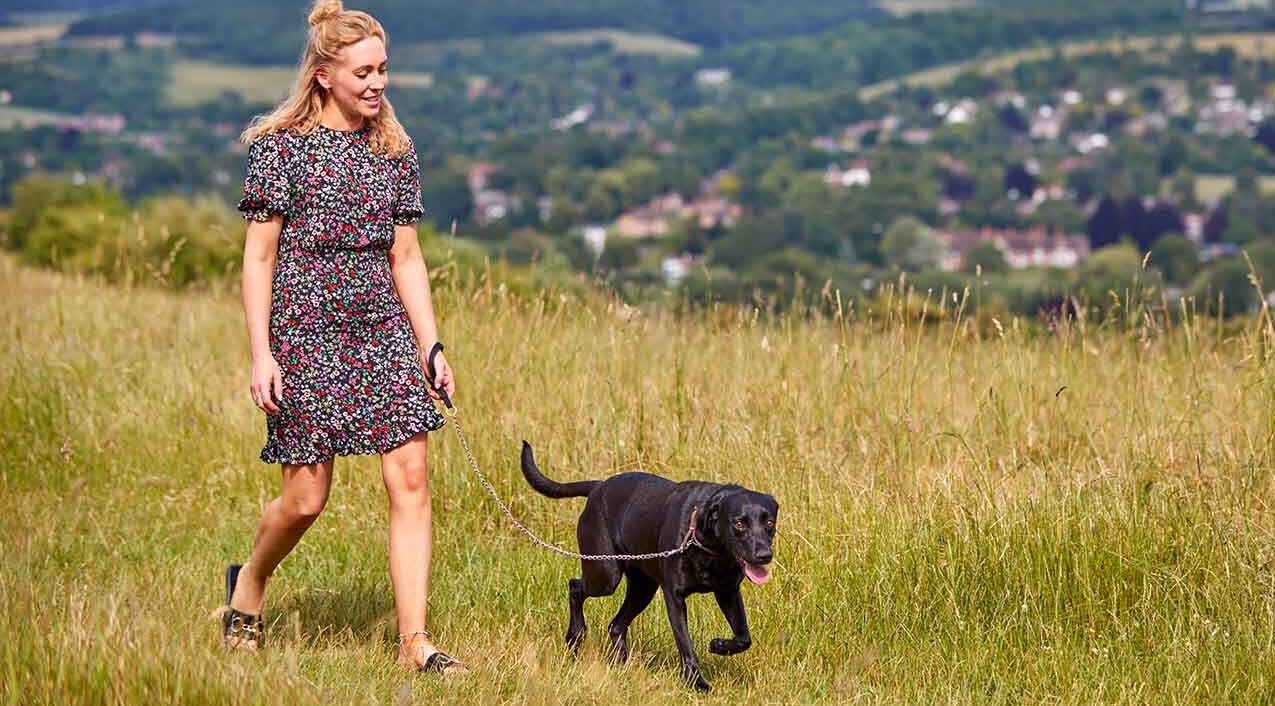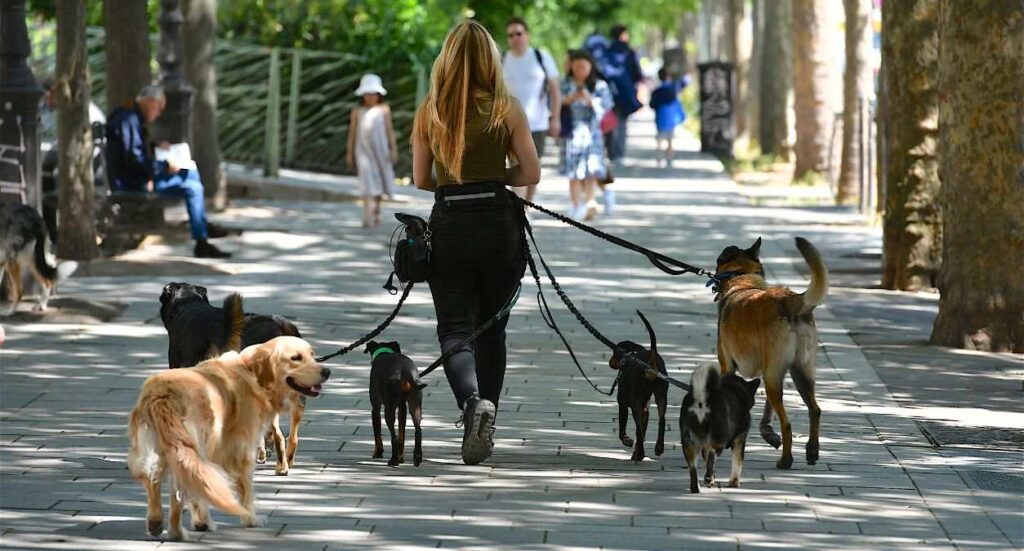As temperatures soar across the UK this summer, many of us are taking extra steps to stay cool. But what about our four-legged friends?
Dogs don’t sweat like we do, and their furry coats mean they feel the heat a lot more than we realise. From burnt paw pads to heatstroke, summer brings a whole host of seasonal hazards for our pups.
Pet experts Sian Lawley-Rudd, an ethical dog trainer at Lavender Garden Animal Services and canine welfare expert, Sadie Geoghegan-Dann, dog trainer and carer at Nervous Rex to bring you everything you need to know about keeping your dog safe in the heat – including practical tips, warning signs to watch for, and essential advice for every type of dog owner. Find out about some crucial seasonal advice to protect your pooch.
What are the most common summer dangers for dogs?
The warmer months can be wonderful for walks, days out and playtime in the garden – but they also come with hidden risks.
Here are the top seasonal dangers to be aware of:
- Heatstroke and heat exhaustion
- Burnt paw pads from hot pavements or artificial grass
- Being left in hot cars (even for a “few minutes”)
- Overexertion during exercise or play
- Water hazards like unsupervised swimming or water intoxication
- Dehydration
- Insect stings, ticks, poisonous plants and BBQ leftovers
One of the most misunderstood risks? The pavement.
“If you can’t hold the back of your hand on the pavement for five seconds without it burning, then it’s too hot to walk your dog.”
An extremely high-risk activity is leaving your dog in a car. The RSPCA highlights how a car can feel like 47 degrees, when the air temperature is 22 degrees.
Which dogs are more at risk in the heat?
While any dog can struggle in hot weather, some are much more vulnerable to heat-related problems – and it’s not just down to breed.
Dogs that need extra care in warm weather include:
- Flat-faced (brachycephalic) breeds – such as Pugs, French Bulldogs, Boxers and Shih Tzus – often struggle to breathe efficiently in the heat, making it harder for them to cool down naturally.
- Thick-coated breeds – like Huskies, Newfoundlands and Chows – can overheat quickly, especially if their coat isn’t kept well-groomed.
- Older dogs, overweight pets or those with health issues, such as respiratory or heart conditions, are less able to regulate their body temperature.
- Dogs with light-coloured or thin fur, including breeds like Staffies, Dalmatians, Lurchers and Chinese Cresteds, are at higher risk of sunburn, particularly on exposed areas like the nose, ears, and belly.
Even if your dog is usually fit and healthy, they can still be affected by the heat – so it’s always better to be cautious.
Breeds like Spaniels, Setters and Retrievers may also run into trouble with grass seeds during summer, which can easily become lodged in their paws, ears or nose and cause irritation or infection.
Get Dog Walking Liability Insurance

How to spot the signs of heatstroke in dogs
Recognising the early signs of heat stress can make the difference between life and death. Paying close attention to dogs in extreme heat is essential to recognise the danger signs, even more so if they have had excessive exposure to the sun and heat.
Look out for:
- Excessive panting and drooling
- Lethargy or reluctance to move
- Bright red or pale gums
- Wobbly legs or collapse
- Vomiting, diarrhoea or signs of distress
If you suspect heatstroke – “Cool first, then get them to the vet as quickly as possible, while continuing to cool them.”
Time is critical.
Safe ways to keep your dog cool in hot weather
Prevention is always better than cure, and there are lots of ways to help your dog stay cool and happy:
- Walk your dog early in the morning or late in the evening
- Provide plenty of shade and cool indoor areas
- Use cooling mats, fans and paddling pools
- Let them lie on a wet towel (but don’t place one on them – it traps heat)
- Freeze food or treats in a Kong or lick mat
- Avoid car journeys where possible
“Frozen enrichment is a great way to help keep your dog cool – and mentally stimulated!”
Ice cubes are safe for most healthy dogs, but you should avoid giving them ice if they’re in the middle of a heatstroke episode. You can also add crushed ice to their water or freeze small treats into ice cubes.
Can dogs swim to cool down?
Swimming is a great way for dogs to cool off – but like everything, it comes with precautions.
“Brachycephalic breeds are less buoyant – swimming can be dangerous if unsupervised.”
Always supervise your dog in water
- Avoid strong currents, very cold water, or letting them gulp too much while playing
- Be cautious with flat-faced breeds, who are less buoyant and may tire quickly.
Even small garden paddling pools can be a fun and safe way for your dog to stay cool on a hot day.
How much water does a dog need in the Summer?
Hydration is crucial.
“Give access to plenty of fresh water – during hot weather, don’t risk restricting their intake.”
As a guide:
- Dogs need 40–60ml of water per kilogram of body weight per day
- In hot weather, this may increase to 70–100ml per kg
- Dogs on dry food will need to drink more than those on wet diets
Keep bowls topped up and clean throughout the day. For fun hydration, try offering dog-safe broths or icy fruit snacks like frozen banana slices or blueberries.
Do dogs need sunscreen?
Surprisingly, yes – particularly those with pale or exposed skin.
“Dog-safe sunscreen can help prevent painful burns on sensitive areas like the nose and ears.”
Apply dog-specific sunscreen to the nose, ear tips, and belly. Never use human sunscreen – ingredients like zinc oxide can be toxic to dogs. For sun-worshipping pups, limit sunbathing time and provide shaded alternatives.
Other outdoor risks: BBQs, bugs & plants
Summer also brings with it less obvious risks:
“Grass seeds can lodge in your dog’s ears, paws or nose – regular checks and grooming are essential.”
- BBQs can expose dogs to toxic foods, skewers, and burns. Sweetcorn cobs are particularly dangerous as they can’t be digested and can get lodged if ingested.
- Bee and wasp stings may cause swelling or allergic reactions
- Ticks and grass seeds can lodge in ears, noses or between paws
- Be wary of toxic plants like lilies, foxgloves, and azaleas
After any outdoor activity, give your dog a quick once-over for ticks or irritants.
Your legal duty: What the law says
Did you know that under the Animal Welfare Act 2006, you have a legal obligation to provide proper care for your pet?
That includes:
- Providing a suitable environment
- Protecting them from pain and suffering
- Meeting their physical and emotional needs
Neglecting to do so could lead to legal consequences – and more importantly, could cost your dog their life.
Our dogs rely on us to make the right decisions for them, especially in extreme weather. With just a few simple precautions, you can enjoy a safe, happy and healthy summer with your best friend by your side.
Quick dog safety checklist:
- Avoid midday walks – stick to early morning or evening
- Always offer cool, shaded resting spots
- Keep fresh water accessible all day
- Never leave your dog in the car
- Watch for signs of heatstroke
- Use frozen treats and cooling aids
- Check paws, ears, and fur after outdoor time
Get Pet Business Insurance from Protectivity
*Disclaimer – This blog has been created as general information and should not be taken as advice. Make sure you have the correct level of insurance for your requirements and always review policy documentation. Information is factually accurate at the time of publishing but may have become out of date.
Last updated by
















